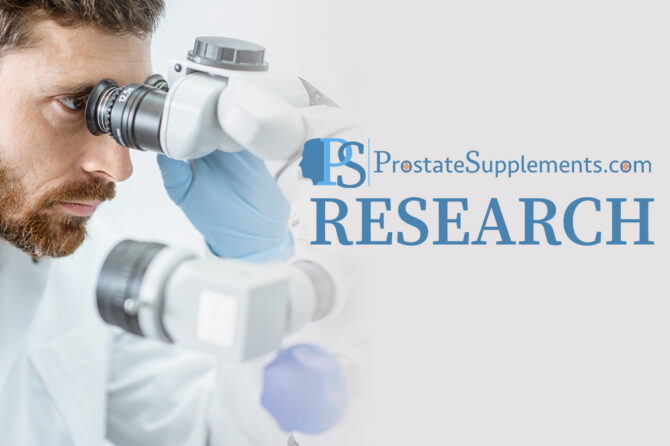
Omega-6 Fatty Acids: What They Do, How They Affect Men’s Health and the Prostate, and Smart Ways to Get Them
Executive Summary (for quick scanning)
- Omega-6 fats are essential. You must get them from food; the primary one is linoleic acid (LA), which the body can convert (slowly) to longer-chain forms such as arachidonic acid (AA) and dihomo-γ-linolenic acid (DGLA).
- Cardiometabolic health: Higher dietary and circulating LA are generally linked to lower LDL-cholesterol and lower cardiovascular risk when LA replaces saturated fat. Higher LA does not raise inflammation in most studies.
- Men’s health & hormones: Evidence on testosterone and semen parameters is mixed; overall diet quality and a balanced omega-6:omega-3 pattern matter more than chasing a single fat.
- Prostate health: Large population studies and reviews do not show harm from higher LA; some biomarker studies even suggest lower prostate cancer risk with higher LA. AA shows no clear causal link to prostate cancer. Data for urinary symptoms/BPH are limited and mixed.
- How much? The Adequate Intake (AI) for LA is 17 g/day for men 19–50 and 14 g/day for men ≥51. Most men already meet this from regular foods (oils, nuts, seeds).
- Best practice: Emphasize whole-food sources of LA, keep omega-3 intake adequate, and use supplements (e.g., GLA from borage/evening primrose) only when there’s a clear clinical reason and after discussing with a clinician.
1) Biochemistry in Brief: The Omega-6 Family
“Omega-6” refers to polyunsaturated fatty acids (PUFAs) whose first double bond sits six carbons from the methyl (ω) end. The parent fatty acid is linoleic acid (LA, 18:2n-6). Humans elongate/desaturate LA—inefficiently—into γ-linolenic acid (GLA, 18:3n-6) → DGLA (20:3n-6) → arachidonic acid (AA, 20:4n-6). These are embedded into phospholipid membranes and serve as substrates for eicosanoids (prostaglandins, leukotrienes, etc.), which regulate vascular tone, platelet activity, immunity, and smooth-muscle contractility.
Key point: physiological effects depend on total diet and tissue levels, not just a single food.
2) How Omega-6 Fats Affect General Health
Cardiometabolic Outcomes
- Higher omega-6 PUFA intake, mainly LA, reduces coronary risk when replacing saturated fat.
- On inflammation, multiple trials and reviews report no increase—and sometimes reductions—in inflammatory markers with higher LA intake.
The Omega-6:Omega-3 Ratio Debate
Some argue that a high dietary omega-6:omega-3 ratio is inherently inflammatory. Current guidance focuses less on the ratio and more on meeting omega-3 needs while replacing saturated fat with unsaturated fat. Increasing LA does not automatically convert to excess AA or trigger inflammation in the body.
3) Men’s Health: Hormones, Fertility, Performance
Testosterone & Reproductive Hormones
Evidence is mixed:
- Some observational studies suggest overall fat patterns, including omega-6, may relate to testicular function, but findings vary.
- Small trials show conflicting hormonal responses to PUFA-rich diets.
- Reviews indicate both omega-3 and omega-6 are structural components of sperm membranes; balance and antioxidant intake likely matter as much as absolute intake.
Bottom line: No strong evidence that typical, food-based omega-6 intake suppresses testosterone in healthy men.
4) Prostate Health and Urinary Outcomes
Prostate Cancer Risk
- Higher circulating LA has been linked with lower total/low-grade prostate cancer risk, with no dose-response harm.
- Reviews of large prospective studies show no association between dietary LA and prostate cancer; higher tissue LA may even be protective.
- Genetic evidence suggests no causal link between AA and prostate cancer.
Benign Prostatic Hyperplasia (BPH) and Urinary Symptoms
- Data are limited. Some older studies suggested weak associations between LA/AA and BPH, but the evidence is inconsistent.
- Mechanistically, bladder function is influenced by prostaglandins derived from AA, which regulate muscle tone. Elevated prostaglandins may contribute to overactive bladder, but no clinical trials show that changing dietary omega-6 intake improves urinary symptoms.
Practical take: For urinary health, weight control, physical activity, and fluid timing matter far more than fatty acid intake.
5) Safety Notes and Controversies
- Inflammation concern: Human data show that usual LA intake does not increase systemic inflammation.
- GLA supplements (from evening primrose, borage, black currant): GLA can convert to DGLA and prostaglandin E1, which may be anti-inflammatory.
- Evening primrose oil may increase bleeding risk with anticoagulants and has seizure-risk cautions.
- Borage oil can contain harmful alkaloids unless purified.
- Cooking & storage: High-LA oils are stable for everyday cooking but can form oxidation products with repeated deep-frying; store oils cool and limit re-use.
6) How Much Omega-6 Do Men Need?
- Adequate Intake (AI) for LA:
Men 19–50: 17 g/day; Men ≥51: 14 g/day.
Food Sources (Approximate LA per Serving)
- Oils (safflower, sunflower, soybean; 1 Tbsp): ~7–10 g LA.
- Seeds & nuts (28 g): sunflower seeds ~9–10 g LA; peanuts ~4–5 g.
- Poultry & eggs: provide smaller amounts of AA directly.
7) Omega-6 Supplements (GLA)
When might GLA be considered? Some trials have explored GLA (typically 320–480 mg/day) for inflammatory skin conditions or rheumatoid arthritis, with mixed outcomes. For urinary or prostate health, evidence is insufficient. Always consult a clinician before starting.
8) Practical, Food-First Plan for Men
- Meet LA needs with whole foods: 1–2 Tbsp of LA-rich oil plus a handful of seeds/nuts daily.
- Don’t neglect omega-3s: Aim for oily fish or plant ALA sources.
- Urinary health basics: Maintain a healthy weight, exercise, and manage fluid timing.
- If supplementing with GLA: Choose reputable brands, verify GLA content, and check for interactions.
9) Ingestion Methods at a Glance
- Dietary (preferred): Oils (sunflower, safflower, soybean), nuts (peanuts, pine nuts), seeds (sunflower, sesame), poultry, and eggs.
- Supplemental: GLA from borage, evening primrose, or black currant seed oil, typically 320–480 mg/day when clinically appropriate.
10) Key Takeaways
- For most men, food-based LA intake alongside adequate omega-3s is ideal.
- Prostate cancer: LA appears neutral or protective.
- Urinary symptoms: Lifestyle factors matter more than fatty acid intake.


Leave a reply